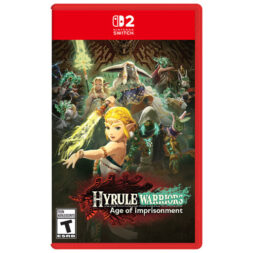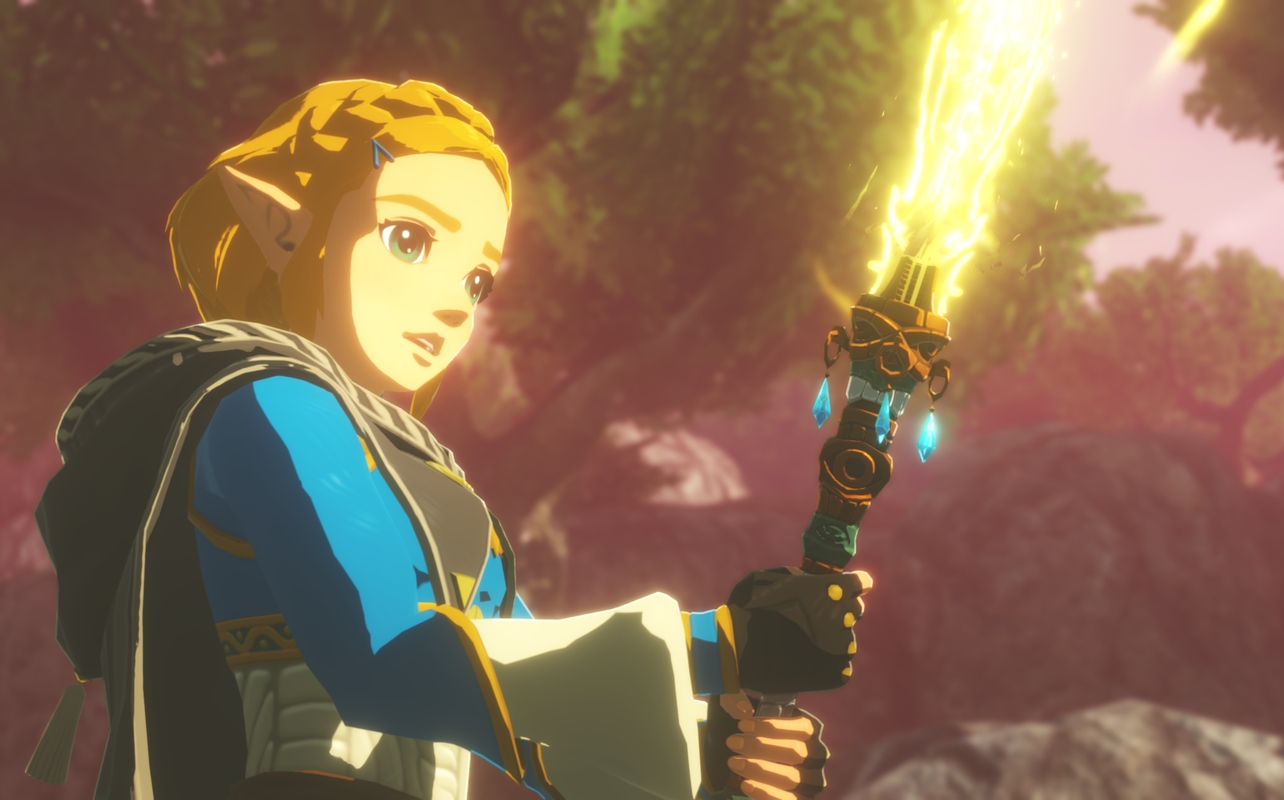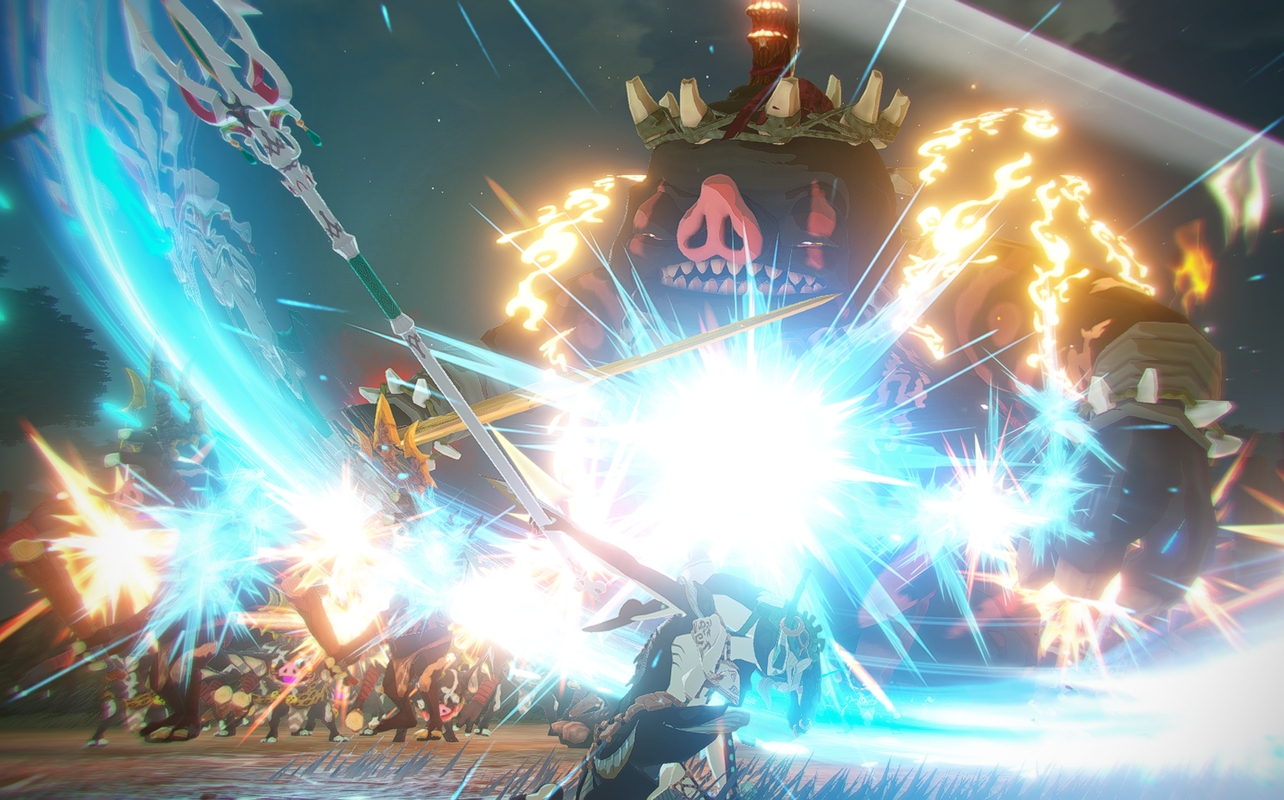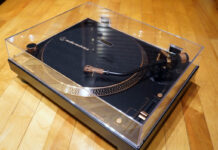
Hyrule Warriors: Age of Imprisonment brings Nintendo and Koei Tecmo together once again, combining The Legend of Zelda’s world with the large-scale action of the Musou series. Acting as a prequel to The Legend of Zelda: Tears of the Kingdom, it dives into the ancient Imprisoning War. A pivotal event that shaped Hyrule’s history.
This time, the spotlight lands squarely on Princess Zelda. Instead of standing behind Link, she steps onto the battlefield herself, leading an alliance of Zonai, Rito, Gorons, and Hylians. The result feels both familiar and new: the story connects directly to events longtime fans recognize, but the action feels faster, smoother, and more confident than ever before.
You can still expect waves of enemies, flashy combos, and plenty of chaos. But Hyrule Warriors: Age of Imprisonment tightens everything around story missions and character interactions, giving each battle a stronger sense of purpose. The mix of Zelda’s light-infused powers and the signature Musou gameplay gives combat a surprising rhythm that rewards timing and teamwork. After a few hours in, I noticed how much more focused the game feels compared to Hyrule Warriors: Age of Calamity. The battles are clearer, the objectives sharper, and the story pacing stronger. For fans of Zelda or action-heavy adventures, it’s an easy game to lose time in.

Hyrule Warriors: Age of Imprisonment details
Platform(s): Nintendo Switch 2
Developer(s): Koei Tecmo, AAA Games Studio
Publisher(s): Nintendo
Genre: Action
Modes: Single-player, Multiplayer
ESRB Rating: T (Teen)
Story of the Imprisoning War
The story in Hyrule Warriors: Age of Imprisonment takes place long before Link’s adventures, focusing on the origins of Hyrule itself. Princess Zelda awakens in a distant past after being pulled through time, finding herself face-to-face with the kingdom’s founders, Rauru and Sonia. Together, they unite the Zonai, Gorons, Rito, and Hylians against a growing darkness threatening to consume their world.
Ganondorf feels more present here than in past Zelda games. You see his power grow and understand what makes him so dangerous. His influence spreads across early Hyrule, disrupting the fragile peace that Rauru and Sonia fight to protect. Every mission ties back to his growing threat, giving clear context to the events that echo through The Legend of Zelda: Tears of the Kingdom. The game’s focus on showing how these alliances formed during the Imprisoning War helps the story feel grounded within Zelda’s larger timeline.
The new characters play an important role too. Mineru uses her mastery of ancient constructs to give the team an edge in battle, while Calamo, a brave little Korok from the past, provides much-needed levity. Their interactions with Zelda feel natural and meaningful, giving her journey a clear emotional centre. I really liked how the story mixes large-scale fights with smaller, personal moments that actually stick with you. It’s not just about cutting through crowds; the game finds time to show how these heroes rely on each other. Watching Zelda grow into a true leader was easily one of my favourite parts.

Princess Zelda takes command
Combat in Hyrule Warriors: Age of Imprisonment feels sharper and more deliberate than past entries. Each character fights differently, and their abilities actually matter. Zelda’s light-based attacks create wide arcs across the field, while Mineru summons ancient Constructs that smash through enemy lines. Switching between heroes mid-battle keeps the action steady, letting you chain attacks across the map without losing momentum.
The new Sync Strike system changes how you think about positioning. When two allies stay close in battle, you can trigger powerful team attacks that deal heavy damage and clear space fast. It’s more than just a flashy move. It rewards awareness and timing in a way earlier games didn’t. Zonai technology also plays a key role, from flamethrowers to Shock Emitters, each powered by a rechargeable battery. Learning when to spend that energy adds a satisfying bit of rhythm to the chaos.
Progression ties everything together. Completing side missions earns resources that feed into a regional contribution system, strengthening Hyrule as you reclaim it. Upgrading weapons and expanding combos never feels forced, and optional challenges keep things fresh between major story battles. Some missions even break format, like flying a Construct between Sky Islands in on-rails shooter segments.
I still think about the first time I fought that massive Gloom Spawn near Hyrule Field. I switched between Zelda and Rauru mid-fight to keep pressure on its weak spots. As the creature lunged, a well-timed Sync Strike finished it off in a burst of light. That moment showed how well everything connects, a clear sign of how much the series has grown.

Sharper battles and smoother performance
Compared to Hyrule Warriors: Age of Calamity, Hyrule Warriors: Age of Imprisonment is a huge step forward in how it looks and runs. The move to Nintendo Switch 2 finally gives the Musou-style action the consistency it’s always needed. Battles stay close to 60 frames per second, even when the screen’s packed with enemies. It holds up great both on TV and in handheld mode.
The visuals look way better this time. Lighting hits harder, and the battles actually feel clean instead of cluttered. Zelda’s light attacks shine through darker spots, and the effects don’t swamp the screen. Even the caves look solid, with reflections that make them pop. That extra draw distance makes it easier to see what’s going on and where your team’s headed.
Character animations are smoother, with each hero moving in a way that fits their fighting style. Zelda’s quick strikes look sharp and controlled, while Rauru’s heavy hits land with real weight. Switching between heroes feels seamless, keeping the flow steady during hectic moments. The improved animation work makes those Sync Strikes even more satisfying to pull off. Camera control is much tighter too. It’s easier to track enemies in close spaces, and the lock-on stays reliable when the screen gets busy. That small change does a lot for clarity, especially when you’re surrounded on all sides.
Everything here feels more refined and better balanced. The action looks sharp, runs smooth, and never really struggles to keep up with the pace. It’s the first time a Hyrule Warriors game truly feels built for the hardware it’s on.

Accessibility and Co-op Options
Age of Imprisonment gives you a lot of flexibility in how you play. There are four difficulty modes ranging from Easy to Very Hard, letting you tailor the challenge while adjusting control options for comfort. You can remap buttons, tweak sensitivity, and even simplify combos if you want fewer button presses. It’s a small touch, but it keeps things comfortable when you’re grinding through longer play sessions.
Co-op is where the game really opens up. Local Gameshare on the Nintendo Switch 2 lets two people link their consoles and fight side by side with full performance. It’s quick to set up and doesn’t feel restricted like older modes. Traditional split-screen is still here, too, letting you share the same screen without any real loss in quality.
I teamed up with a friend using Local Gameshare, and the experience surprised me. We coordinated Sync Strikes during a boss encounter in the Zonai ruins, each controlling different characters. When both attacks landed together, the whole screen lit up. It’s the kind of moment that makes co-op worth it. It is simple, fast, and fun. Between adjustable controls, and multiple ways to play together, Hyrule Warriors: Age of Imprisonment feels far more accessible than its predecessor. Whether you hop in for a few battles or grind for hours, it always feels easy to keep going.

Hyrule Warriors: Age of Imprisonment doesn’t reinvent the formula, but it proves how much life is still left in it
Hyrule Warriors: Age of Imprisonment feels like a proper evolution for the series. It respects what came before while finding new ways to tell a familiar story. The focus on Zelda’s perspective gives the game a sense of purpose that the previous entry didn’t have. Watching her take charge and lead heroes from every corner of Hyrule makes the whole journey feel more personal.
The campaign blends large-scale action and storytelling better than expected. You still fight through huge crowds, but each mission feels connected to the world and the characters driving it. The addition of Sync Strikes, Zonai tools, and team-based attacks gives combat more structure without losing that chaotic energy Musou fans enjoy. When everything clicks, it’s a fun mix of precision and mayhem that keeps you moving from one objective to the next.
| Pros | Cons |
|---|---|
| Zelda takes the lead with a strong, meaningful role that drives the entire story. | Some side missions can feel repetitive after a while. |
| Combat feels sharper and more refined with new Sync Strikes and Zonai tools. | The story pacing slows down between major battles. |
| Co-op and accessibility options make it easy and fun to play with others. | Limited exploration makes the world feel a bit confined. |
| Performance on Nintendo Switch 2 is smooth and near consistent throughout. |
Performance on the Nintendo Switch 2 helps it all come together. The smoother visuals, stronger animations, and sharper controls make every fight more responsive. The difference between this and Hyrule Warriors: Age of Calamity is easy to notice, especially when dozens of enemies fill the screen.
Overall assessment of Hyrule Warriors: Age of Imprisonment
Gameplay: 4.5/5
Graphics: 4.5/5
Sound: 4/5
Lasting appeal/Replayability: 4/5
Overall rating: 4.3/5 (86%)
The best part for me was seeing Zelda finally take centre stage. She’s more than a side character here. She’s the centre of everything. Seeing her balance power, doubt, and leadership across the campaign felt rewarding. It’s rare to see a character from such a long-running series evolve this naturally. Even after finishing the story, I kept going back for side missions and upgrades. There’s always one more thing to unlock, one more combo to master. Hyrule Warriors: Age of Imprisonment doesn’t reinvent the formula, but it proves how much life is still left in it.
Click here to see the full line of video game software available at Bestbuy.ca
Click here to see digital video game downloads offered at BestBuy.ca





